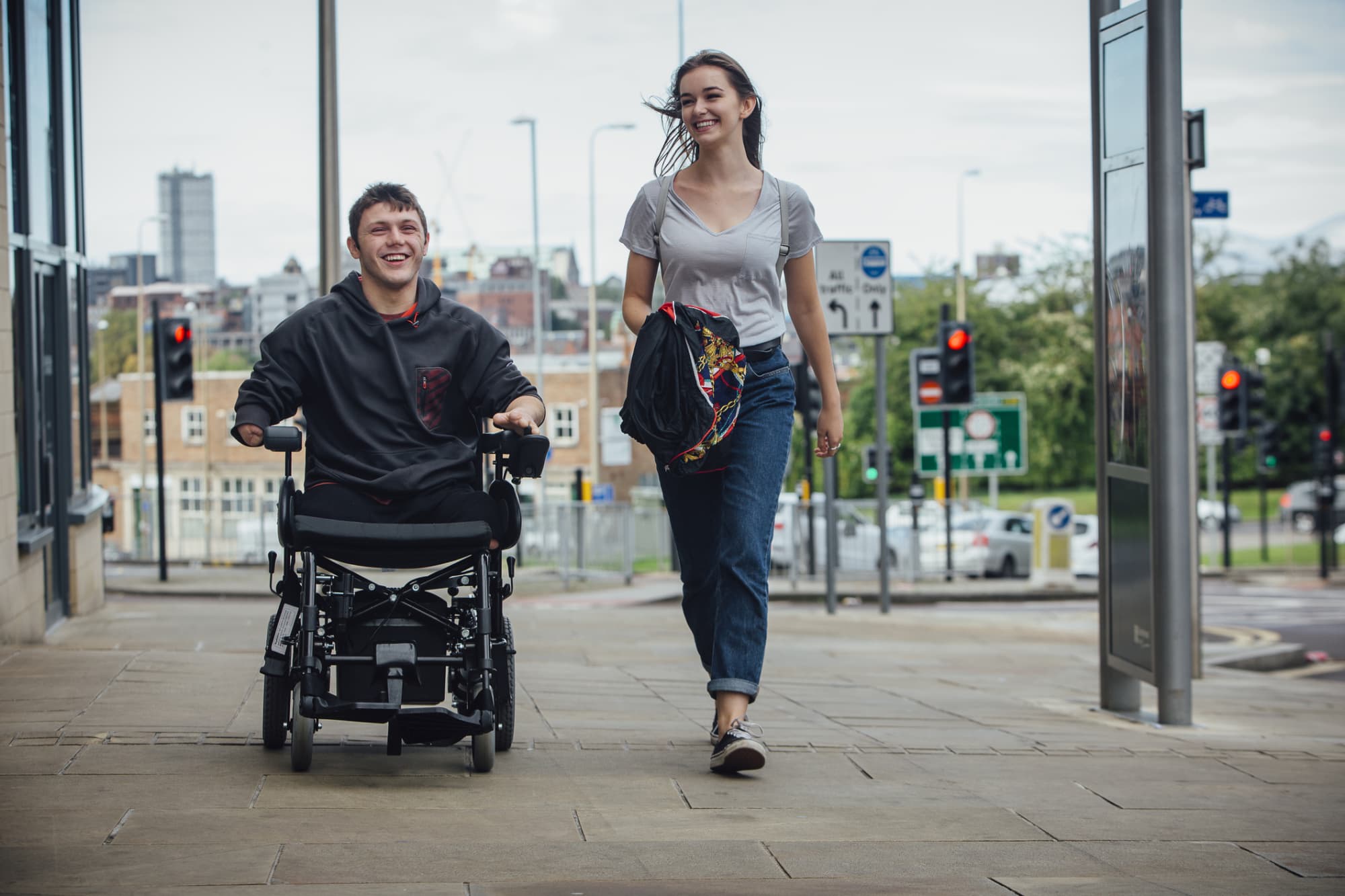Funding for Women’s Education

Take our quiz and we'll do the homework for you! Compare your school matches and apply to your top choice today.

Fellowships, Scholarships, Grants & Expert Advice on Applying
Between the 2011-2012 and 2016-2017 academic years, the cost of college rose significantly. Among public universities, tuition and fees rose by 9 percent and 11 percent for two-year and four-year institutions, respectively. Private colleges and universities increased their costs by 13 percent. College is expensive, and most students need help to avoid significant student debt. Prospective and current women students wanting to understand their options when it comes to scholarships, grants, fellowships and loans will find much to assist them in this guide, while our expert interview with a financial aid professional provides insight into funding sources designed specifically for women. Expert Advisors
Scholarships for Women
In light of the rising costs of education, women considering college – especially in subjects traditionally dominated by men – need support to break through those glass ceilings and pave the way for girls who aspire to attend college in the future. Fortunately, many universities, foundations, and companies are stepping up to provide funding opportunities to this population across academic disciplines. So how can a student feel confident in their scholarship applications? Start with these quick tips:
Be You
It’s easy to think about how many other people must be applying for the same scholarships and how interesting their lives must be. Think again. The best thing you can do is be authentic to yourself when you’re filling out your applications and preparing your scholarship essays. You have a unique voice and a unique story, and scholarship committees are looking for that authenticity. They want to know about you and your life, and you’re the best expert on that subject.
Highlight Accomplishments
It doesn’t matter what scholarship you’re applying for. As a woman, you bring unique experiences and perspective to the table. If you’re applying for women-specific scholarships, be sure to highlight your accomplishments as a female, and make a clear case for how they relate to the scholarship you are seeking.
Remember Deadlines
Even if you have the most impressive application of all the applicants, reading panels tend to be strict when it comes to receiving materials. Double check deadlines and create a calendar with reminders to ensure you make the cut.
Personalize
Filling out dozens of scholarship applications and writing essays is a laborious process. It can be tempting to use generic information and cut and paste large sections of text from other applications, but resist the urge. Scholarship panels want to know you understand the mission of the organization offering the scholarship, and they want to see how well you’re able to articulate that.
While a variety of financial aid opportunities are available, scholarships are sought after because they don’t have to be paid back. Scholarships specifically for women are offered by schools, nonprofit organizations, companies, institutions and more. Hundreds of scholarships are available to women, and we’ve featured a few of them below.
Fellowships for Women

Although fellowships and scholarships are often discussed interchangeably, subtle differences exist – especially in who is eligible to receive them. Fellowships in the academic arena are typically reserved for students completing post-baccalaureate work. Lots of graduate students work as teaching assistants via a fellowship, while doctoral and post-doctoral learners may receive a research fellowship to complete their dissertation or further their research upon graduation.
Unlike scholarships, most fellowships require some type of work component, be it an internship or research-based service. Applications are typically a bit more intensive than scholarships given that fellowships often provide more funds and are more hands-on in their requirements.
Sponsoring Organization: Dissertation Fellowship Amount: $20,000
Applications must be submitted by November 15; open to all women who are in their final year of dissertation writing, regardless of degree area or topic. Funds can be used for for educational expenses, cost of living, childcare, and academic travel.
Sponsoring Organization: Forte Fellows Program Amount: Up to half the cost of tuition each year of the program
Awarded to female students currently working towards their MBA degrees. As part of the award, recipients attend Forte’s MBA Women Leadership Conference and Financial Services FAST Track Conference.
Sponsoring Organization: National Fellowship Program Amount: $8,000
Awarded to female scientists pursuing research careers that are currently completing hypothesis-driven research at an American or international institution. Applicants can use these funds for supplies, equipment, publication of research, travel and food during field studies, and travel to outside laboratories for research collaboration.
Sponsoring Organization: Mariam K. Chamberlain Fellowship in Women and Public Policy Amount: $32,680
Awarded to women who hold at least a bachelor’s degree in a social science discipline and have experience in quantitative research skills. Each year the Institute selects a range of policy research areas that fellows focus on during their time at IWPR.
Sponsoring Organization: Fellows Program
Working together with Harvard Business School and INSEAD, IWF provides a year-long fellowship bringing together fellows from across the world for 20 days of developing further leadership skills and strategic management skills. Although the fellowship offers no cash, all costs associated with the program are covered.
Sponsoring Organization: Fellowships for Women in Science Amount: Up to $60,000
Awarded annually to five women conducting postdoctoral research in the United States who have completed their PhDs but are not in a faculty position. In addition to these requirements, recipients must also commit to 20 hours of volunteer work supporting women and girls in science.
Sponsoring Organization: Women’s Fellowship Program Amount: $20,000
These awards are made to specific universities to be dispersed to females currently completing a PhD who are in need of financial assistance. As part of the award, travel expenses for attendance at one conference within the student’s field of study is included.
Sponsoring Organization: Numerous Fellowships Amount: Up to $3,000
Wellesley College has a range of fellowships available to undergraduate students completing the requirements of senior projects. Awards include academic and project fees and are awarded based on financial need.
Sponsoring Organization: Fellowship in Women’s Studies Amount: $5,000
Awarded to ten recipients annually who are PhD candidates and are currently working to complete their dissertations. Eligible applicants should be enrolled in a humanities or social sciences program and be working towards a contribution to the larger field of women’s studies.
Sponsoring Organization: Amelia Earhart Fellowship Amount: $10,000
Awarded to women working toward careers in aerospace and aerospace-related industries at the PhD level. Funds may be used toward tuition, books, fees, living expenses, required equipment, and travel/room/board associated with research or conference attendance.
Grants for Women

Like scholarships, grants are academic funds awarded to students that don’t have to be paid back. The vast majority of grant funds are awarded based on need, whereas scholarships tend to take in other factors, including academic or athletic merit. Grants can be awarded by schools, foundations, companies, or the Department of Education, although this type of funding – unlike scholarships or fellowships – can only be awarded to U.S. citizens. Grant funds can typically be used for all the same things as a scholarship and can be found at every academic level, ranging from associate to doctoral degrees.
Sponsoring Organization: Community Action Grant Amount: Up to $10,000 Application Deadline: January 15
Available to women with a proposed activity that has a direct positive impact on the public or community as a whole. This work cannot be attached to academic credit, but postdoctoral research is acceptable.
Sponsoring Organization: Mathematics Travel Grants Amount: Up to $3,500 Application Deadline: February 1, May 1, October 1
Available to women holding a doctorate in mathematics who are pursuing research in an area supported by the Division of Mathematical Sciences.
Sponsoring Organization: Foundation Scholarship Grant Amount: Up to $28,000 Application Deadline: February 15
Provides grant funding to minority females working toward a bachelor’s degree at an accredited college or university.
Sponsoring Organization: Educational Grants Amount: Up to $11,000 Application Deadline: January 15
Available to women who are at least 25 years old and are from one of the countries listed on the MNEG eligibility list. Learners can be enrolled in any level of academic study.
Sponsoring Organization: NBNA Grant Amount: Up to $6,000 Application Deadline: April 15
Awarded to a member of the NBNA who is enrolled in a nursing program (including B.S.N., A.D., Diploma, L.P.N./L.V.N., master’s, or doctoral studies) with at least one year of education remaining at the time of application.
Sponsoring Organization: Biological Anthropology Program Amount: Varies Application Deadline: January 30
Available to graduate-level female students preparing for or currently writing their dissertations in biological anthropology or any sub-area of the field. Recipients can use these funds toward enhancing the content of their dissertation by gathering research afield and/or attending conferences.
Sponsoring Organization: Political Science Doctoral Dissertation Grant Amount: Varies Application Deadline: January 30
Awarded to female undergraduate or graduate students who are researching topics within the political science arenas, including but not limited to established democracies, party activism, political psychologies, and domestic conflict.
Sponsoring Organization: Live Your Dream Education & Training Award for Women Amount: Varies Application Deadline: November 15
Given to women who are the primary source of income for their families and are working toward obtaining a postsecondary degree. Funds can be used towards tuition, books, transportation, and childcare.
Sponsoring Organization: TEACH Grant Amount: $4,000/year Application Deadline: Considered as part of FAFSA
Federal TEACH grants provide funding to students planning to become teachers. In order to qualify, applicants must be planning to focus on a high-need field and at a school serving low-income families.
Sponsoring Organization: WWIN Education Grant Amount: Up to $20,000 Application Deadline: Varies
Available to female students completing an associate or bachelor’s degree at an accredited institution. Applicants must have been a Washington resident for at least 12 months and be below a certain income level at the time of application.
Blending Scholarships for
Women with Financial Aid for All Students
Financial Aid for All Students
Federal Loans
Because it’s rare for scholarships, grants or fellowships to cover the entire cost of a degree, the Department of Education provides a range of federal loans that offer benefits not provided by mainstream loans, including fixed – and lower – interest rates, deferment, income-based repayment plans and consolidation for multiple loans. Direct subsidized loans – meaning the government helps with the cost of interest while a student is in school – are available to undergraduates with financial need, while unsubsidized loans are available to undergraduate, graduate and professional students. Perkins Loans are awarded to students with the greatest need and maintain the lowest fixed interest rate of five percent. Direct PLUS loans are available to parents or graduate students and allow for borrowing the total cost of college.
Federal, State and School Grants
Aside from private grants, federal and state governments offer a range of aid programs. Federal Pell Grants are the most well-known, although other programs – such as the TEACH grant – are also popular. Not all states offer grants, but learners should check with their state’s department of higher education to learn if any funding is available. As an example, Tennessee’s HOPE Access Grant provides $1,250 per semester of full-time enrollment, including summer. Lots of colleges and universities also offer grants, so prospective students should discuss their options with a financial aid administrator to learn about their options.
Work Study
Another federal funding program, work study exists to help learners earn money via part-time jobs, either at their college or in the local community. Open to undergraduate and graduate students alike, participants often find jobs related to their course of study, thereby providing a good line on their resume while simultaneously easing their financial burden. The total work study aid package is calculated based on a student’s financial need and how much funding is available at their school. Participants are paid the current minimum wage, but their hours can’t extend beyond the overall funding amount provided to them during the current academic year.
Get to Know the FAFSA 
To apply for any of the funding types detailed above, students almost always need to fill out the Free Application for Federal Student Aid (FAFSA). This government document requires students to provide financial information on themselves or their parents (if they are a dependent) to determine which types of scholarships, grants, fellowships, work study or loans are suitable for their needs. Because many grants and loans are awarded based on need, students who don’t submit a FAFSA aren’t eligible for any of these forms of aid.
Filling out the FAFSA is an annual process to ensure the financial situation of any student or family hasn’t changed substantially during the previous year. The application process opens on October 1 of each year. Because funds are awarded on a rolling basis, applicants are strongly encouraged to submit their FAFSA as early as possible to ensure maximum funding.
Be Prepared: Filling Out the FAFSA
Before starting the FAFSA process, students and their families should gather all of the following documents to ensure a smooth and quick experience.
Steps & Timeline for Getting School Financing
You’ve decided scholarships are the way to go when it comes to paying for your education, but how does a student stand out amongst the competition to secure awards? The step-by-step instruction given below helps applicants understand what scholarship panels are looking for and how to avoid common pitfalls.
Research
No matter the degree level or area of study, chances are there are numerous funding sources for women hoping to pursue such a career path. Be sure to research federal, state, private, corporate, and institutional sources and compile a list of suitable grants, scholarships, and fellowships (if applicable) along the way.
Organize
After compiling a list, the next step is to develop a plan. Organize the relevant funding options by due dates and make a list of all the required documents for each. While duplicating essays or other specific requirements is not encouraged, lots of basic information will be the same on every application, so start pulling this information together.Ask
Lots of funding applications require learners to submit letters of recommendation, and this process can take time. Students need to ask a handful of trusted mentors, supervisors and teachers if they’re willing to speak on their behalf before providing relevant information so they can write an appropriate recommendation. Most applications also require transcripts, which must be sent directly from the school, so try to request these as soon as possible.
Focus
It’s easy to get excited about the prospect of free money in the early days, but when the reality of filling out applications and writing countless essays sets in, it can also be easy to get distracted. Whether that means setting aside two hours a day to focus on applications or asking a trusted friend to hold you accountable, staying focused can often make the difference in whether or not a student has to take out a loan.
Pay Attention
Maybe it seems like it’s not a big deal, but lots of scholarship panels have very specific requirements for how, when, and where applications are submitted, and it’s important to keep these in mind. The best way to do this is by reading the instructions very carefully and often. For instance, if the foundation offering that significant grant you’re applying for asks that all applications be sent through the mail, they would be well within their rights to disregard any application carelessly sent via e-mail.
Follow up
Depending on the type of funding a student is applying for, submitting the application may be only the first step. Many fellowships, and even a few grants and scholarships, require applicants to take part in interviews or provide research proposals, meaning would-be recipients should be prepared to provide further information and speak knowledgeably about why they would be a good choice for available funds.
From the Expert
Weston Mathews is an Orange County, California based independent educational consultant who’s been serving families nationwide since 2013. During his education and professional career, he has always believed that higher educations should promote personal growth and upward social mobility. He often finds that students and parents are fraught with anxiety over the prospect of not getting into a university or they’re concerned that they simply cannot afford higher education. To him, the difference between “getting in” and “finding a fit” are paramount, and he asserts that financial aid options exist for students of all income levels and fields of study.
Shape your future with an online degree
Connect with a community of peers, and find a program that will allow you to continue your education in a fast and flexible way.

